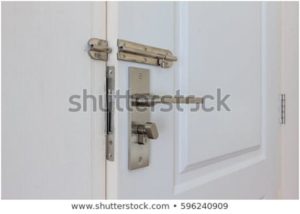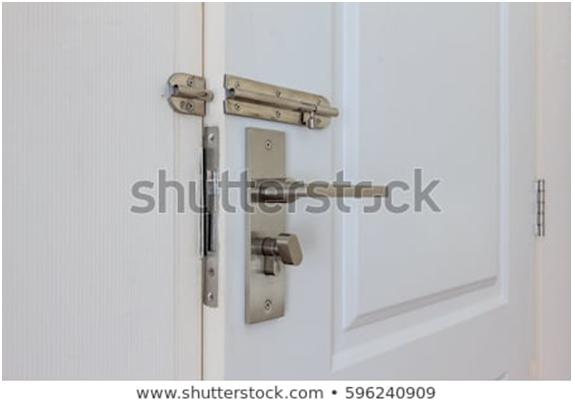Something’s got your Yale lock latch loose. You know it’s a minor problem you can fix yourself but you are not sure exactly how to go about it. Read on for instructions on how to fix it.
I consider myself pretty handy around the house because I easily fix just about any problem with fittings and fixtures. I have a Yale lock with a loose latch and i am wondering if the spring can be fixed or if it is best to discard the entire latch assembly.
Image courtesy of Pixabay

After several years of use, door parts often fall into disrepair especially if the door is in a high traffic part of the house. Some problems you are likely to encounter as your locks age are loose door knobs, stuck deadboltsand loose latches. A loose door latch is a fairly minor problem which doesn’t require a professional locksmith to fix. All it takes is some keen observation to confirm that this is indeed the problem and basic tools.It happens when the latch on a door lock does not catch so the door cannot be completely closed.
Tell-Tale Signs of a Loose Latch
To confirm a loose latch diagnosis, close the door slowly and observe how the latch meets the strike plate. Try to rotate the latch and see if it moves around freely. It also helps to push the latch in and release it to see if it retracts and expands normally. If a loose latch is the problem, you will notice that:
- The latch extends further than normal out of the face plate and appears to be sagging
- It can be rotated clockwise or anticlockwise around the surface of the face plate
- There is a space between the latch and the surface of the face plate. Even if it is just a few millimeters, (enough to fit the edge of a flat-head screwdriver.) it will be a problem.
- In some cases the latch does not respond to movement of the door handle. You will notice this if the latch is rotated slightly because this blocks it from retracting into the face plate. When this happens, the latch grinds against the strike plate and often leaves marks on it when you attempt to close the door.
Before we look at how to resolve the problem, it is important to understand how your door handle works, to better understand what would get your Yale lock latch loose.
How a Door Handle Works
The most commonly used door handles are door knobs and door levers. These are used to either retract the latch and enable opening or release it to allow the door to be closed.
When the door knob is turned to open the door, a spring loaded spindleis rotated. This action causes the latch to retract into the face plate allowing the door to open.
The most common cause of a loose latch is loosening of the spring loaded on the spindle. This is what causes the observable sagging of the latch and excessive extension out of the face pate. In this case you have no choice but to replace your latch assembly. You can retain your door knobs if they are not faulty.
Howto Replace Your Latch Assembly
- Start by removing the door handles on either side of the door. Do this by removing the screws which hold the handles onto the door
- Remove the latch assembly by unscrewing the two screws on the face of the latch and pull out the assembly.
- Take the faulty latch assembly with you to your local hardware store to make sure the new one you purchase is the right size.
- Put the new latch assembly in position, place the face plate in position and screw it back onto the door using the new screws provided with the new assembly.
- Re-attach the two handles back onto the door
- Test the new latch by pushing the latch in with your finger to make sure it retracts and expands normally. Also observe the latch and make sure there is no space between it and the face plate. Further testing involves operating the door handle to make sure it is smooth and that the latch responds to movement of the handle as it should. Finally, close the door all the way to make sure the latch latches completely.
Conclusion
It is recommended that you carry out general maintenance of your locks at least once a year. When you find your Yale lock latch loose, it is a good idea to check what needs to be done on other parts of the lock. Lubricatenon-faulty parts such as the door handles using lubricants like WD-40 or a graphite spray while replacing faulty parts. Save yourself the hassle of disassembling the lock again at a later date for general maintenance.
FAQ
My Yale lock handle is loose. How should I fix it?
When your Yale lock gets wobbly, tighten the screws above and below the handle. Tighten them just enough to pinch on the surface. Be sure not to tighten them too much.
How long can I expect my Yale lock to last before parts need to be replaced?
When you are dealing with a lock on a door in a high traffic area, you are assured of at least seven years of service.
How long is my Yale lock guarantee?
Guarantee periods are different for different Yale products. Check the back of the product packaging to confirm the period for your lock. Guarantees are only valid if the product was correctly installed and has not been modified in any way.
How should I clean my Yale lock?
Use a soft cloth wrung out of mildly soapy water. This helps to remove dirt and clean out finger prints. Avoid acidic or caustic agents.
What tools must I have to install my Yale lock?
You need a Phillips and/or flathead screwdriver. If you have access to a power drill it works much faster. Be sure to use protective eyewear when using a power drill.

